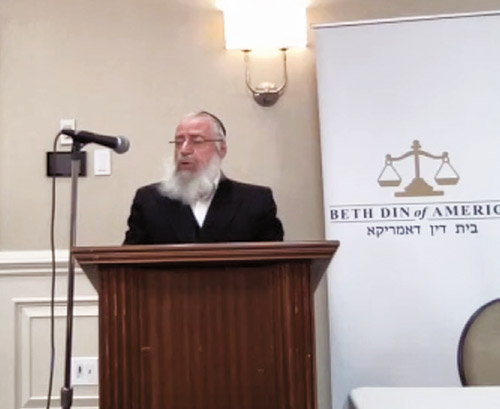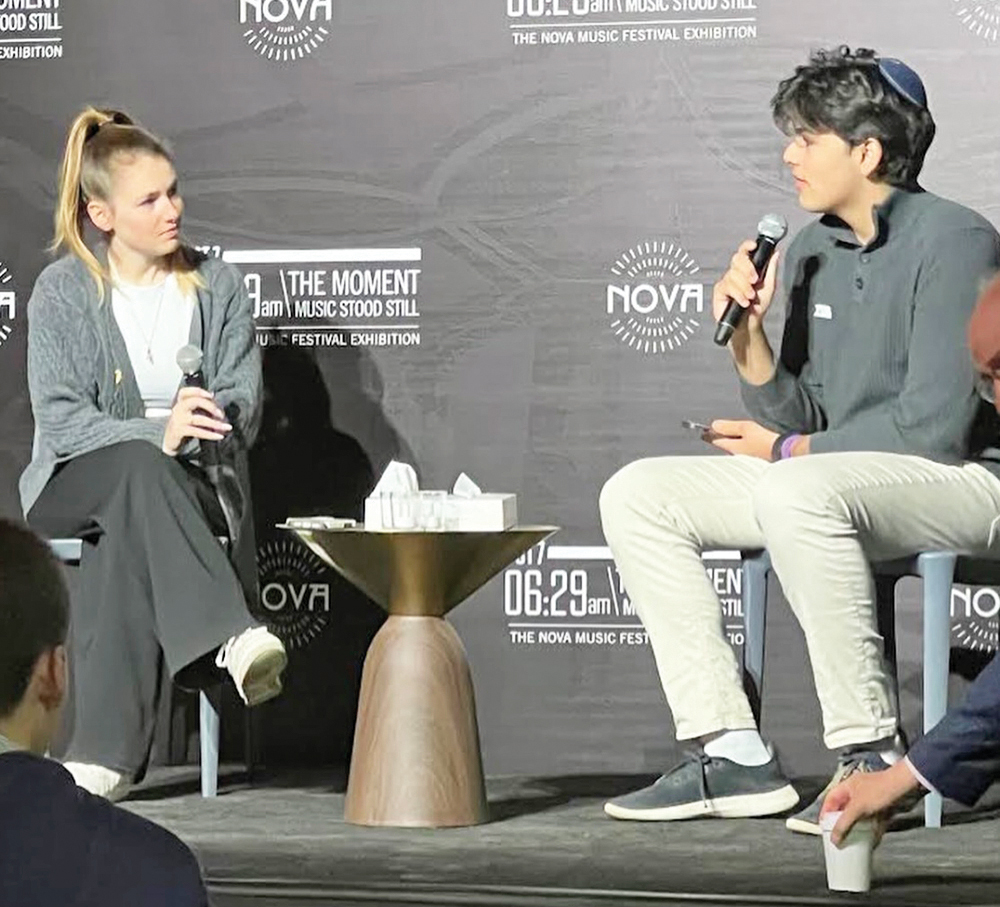


For rabbanim who serve on batei din, and lawyers and mediators serving the observant Jewish community, it is absolutely essential that they stay well versed on contemporary issues facing batei din in the US. Fortunately for them, there is one well-regarded group that can help.
The Beth Din of America, based in New York City, is a rabbinical court that arbitrates and mediates commercial, communal and family disputes, arranges Jewish divorces, resolves contested get and agunah cases, and issues halachic personal status determinations (including certifications of Jewish status).
Since its inception in 1960, the Beth Din of America has been recognized as one of the nation’s preeminent rabbinic courts. The Beth Din is affiliated with the Rabbinical Council of America and the Orthodox Union.
On Sunday, February 20, the Beth Din of America, in conjunction with Congregation Bnai Yeshurun in Teaneck, held three consecutive talks under the umbrella topic of “Beth Din Arbitration in the 21st Century.” The three morning talks were offered both in person and via a webcast on the Beth Din of America website.
The first talk, presented by Rabbi Asher Weiss (av beth din at Darchei Torah in Yerushalayim), addressed “Pshara: The Role of Equity in Beth Din Rulings.”
Rabbi Weiss asked, “When should a beit din try to persuade the competing parties to accept a p’shara (compromise recommendation)?” Citing Gemara Sanhedrin (Daf Vav), he said that if the case if sufficiently advanced and the judges already have a sense of who is right and who isn’t, then it is too late. Yet the chachamim disagree and assert that a p’shara is valid, even preferable, up until when a verdict is announced. He cited the Shulchan Aruch, which says that if a beit din pursues p’shara, “harei zeh m’shubach” (it is praiseworthy). Rabbi Weiss recommended that the judges offer this option “up front,” when appropriate, and explain why it may be preferable.
Rabbi Weiss said that batei din should be careful not to offer p’shara too often, as some community members may think this is the default approach and this can result either in people bringing faulty claims (thinking that a compromise still wins them more than they had) or others thinking that a beit din is incapable of helping them recover legitimately claimed losses. He identified three situations where p’shara is most appropriate: 1) When the beit din is in doubt on the proper halacha or the truthfulness of the parties, or 2) If the beit din fears that a judgment will create a deeper rift between the parties, or 3) When someone caused damages to another but it was indirect so they may not technically be culpable.
The second talk, presented by Rav Hershel Schachter (rosh yeshiva and rosh kollel at RIETS), addressed “Batei Din in America: Challenges and Opportunities.”
Rabbi Schachter recalled that in the prior generation, batei din were often less formal and resulted when two disputants showed up at a yeshiva and pulled aside three rabbanim to form an impromptu court. He recalled a few unusual cases he’d participated in as a judge or witnessed another beit din address in the past few decades. In one, a rav who was head of a yeshiva came against a board that decided to terminate him and the beit din decided in favor of the lay leaders. In another, a shul felt their rav was repeating all his older drashot and sought to terminate him, while the rav wanted to keep his job; the beit din decided in favor of the kehillah. In both cases, the lay leaders were surprised at the verdict, as they doubted that the rabbis on the beit din would rule against a fellow rabbi.
In an international case, a young woman with a college degree married a man with only a high school diploma. The resulting marriage was a brief and unhappy one and the man committed suicide. The woman had to travel from her home in Zurich, Switzerland, to a beit din in London, which oversaw her brother-in-law perform chalitza. Rabbi Schachter stressed that the beit din had to be particularly exacting in this case, as a future beit din would assume the first beit din thoroughly investigated the lineage of the brother.
The third talk, presented by Rabbi Mordechai Willig (av beit din, Beth Din of America) and Rav Yona Reiss, Esq. (sgan av beit din, Beth Din of America), and moderated by Professor Michael Avi Helfand (vice dean of the Pepperdine University School of Law), addressed “The Beth Din System: Where We Are and Where We Are Headed.”
Professor Helfand started the session by asking the two rabbanim “Where are we?” in terms of the status of batei din in America. Rabbi Willing shared a case that the Beth Din of America handled a few years back where a yeshiva sought to terminate a rebbe and the beit din ruled in favor of the rebbe, saying he must be reinstated. The lay leaders decided to take the case to a secular court and a judge ruled that the Beth Din’s decision was “irrational.” This decision caused all batei din in America to worry if their decisions could be upended in secular courts. Rabbi Willig enlisted two pro bono attorneys (Professor Helfand and Binyamin Kaminetsky, who both now serve on the Beth Din of America’s board of directors) and took the case to a superior court, where the five judges all decided in favor of the Beth Din of America’s initial decision.
Rabbi Reiss shared that part of the success of the Beth Din of America is due to the high level of professionalism of its staff and the collegial working environment they have established. He related that at one point the producers of the TV show “Law and Order” sought to include a case involving a New York beit din in one of their episodes and consulted with him about it, demonstrating clearly that batei din are now “on the map” in this country. He added that the Beth Din of America has worked with the Rabbinical Council of America to create a standardized system of geirut (conversion), which is a great kiddush Hashem, and is now working to create common Choshen Mishpat standards for batei din across the U.S.
Professor Helfand asked the two rabbanim to explain why there is increased use of batei din in the community now and why some still are reluctant to do so. Rabbi Willig said that many batei din strive toward a higher level of professionalism now and many see this. At the same time, there are batei din that do not follow best practices, or pursue p’shara too often, and these batei din discourage community members from seeing batei din as a viable option.
Rabbi Reiss added that many batei din are very meticulous now to follow halacha carefully and to abide by American arbitration rules, which has increased their esteem. He also added that, overall, the level of Jewish community observance has grown and more people now recognize the mitzvah to use batei din.
“This event was an opportunity to educate a broad audience about the active dispute resolution practice of the Beth Din of America,” said Rabbi Shlomo Weissmann, director of the Beth Din of America. “We regularly arbitrate and mediate matrimonial and commercial matters, and we do so with efficiency and halachic and legal expertise. We’re extremely excited that gedolei Torah such as Rav Hershel Schachter and Rav Asher Weiss, and our own Av Beth Din Rav Mordechai Willig and Sgan Av Beth Din Rav Yona Reiss, were gathered together in one room to discuss the halachic methodology behind the critical work of the Beth Din of America.”
Harry Glazer welcomes feedback on this news story and suggestions of other stories to cover. He can be reached at [email protected].













